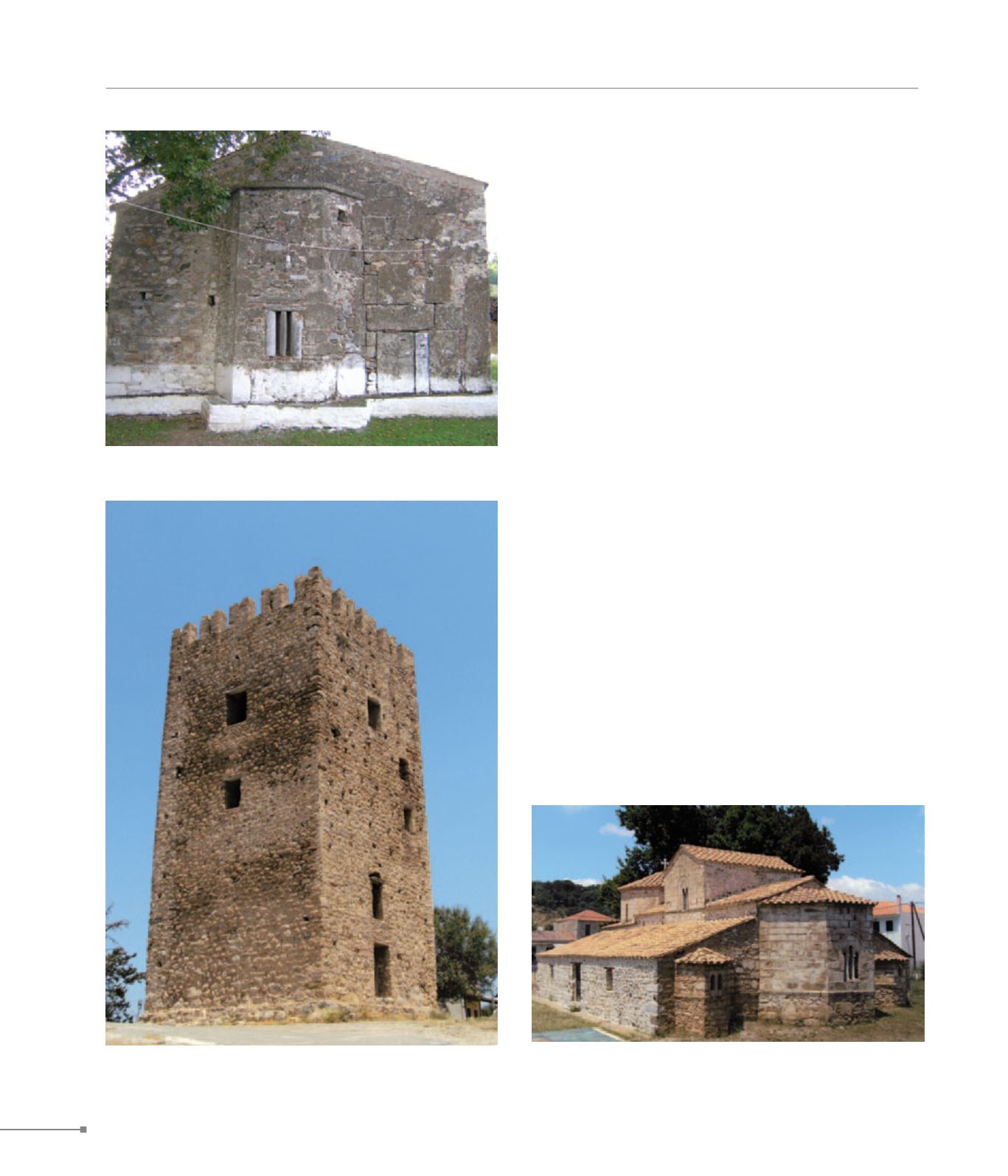
Avlonari.
Avlonari.
EUBOEA
168
174. Avlonari, tower (Αυλωνάρι, πύργος)
174. Avlonari, Saint John Prodromos Nesteutes or Keskesas (Αυλωνάρι,
Άγιος Ιωάννης Νηστευτής ή Κεσκεσάς)
174. Αvlonari, Aghios Demetrios at the Chania site (Αυλωνάρι, Άγιος
Δημήτριος στη θέση Χάνια)
174.
Avlonari.
A few kilometres SW of the village, at the Itea site, remains have
been revealed of a large rectangular building with masonry
from various architectural components, dating from the 5th-6th
c. and possibly an annex of a destroyed Early Christian basilica.
Since the late 13th c. Avlonari had been an important adminis-
trative and military centre of the fertile and densely populated
region stretching N of Aliveri up to Kymi. Inside Avlonari vil-
lage stands a tower. At the Chania site is the important domed
church of Aghios Demetrios (13th c.), cross-vaulted with two
side aisles / chapels and narthex. Two earlier building phases
are indicated, Early Christian and Mid-Byzantine. The church
preserves wall-paintings of the late 13th c.
Close to the village, towards the neighbouring Aghios Geor-
gios, lies the church of Saint John Prodromos, the so-called
“Nesteutes” or “Keskesas”. Originally, it was possibly a two-
columned, cross-in-square church, but today it is aisleless due
to subsequent interventions. From the original building (13th c.)
survives part of the S wall. At a mountainous site, E of Avlonari,
lies the Lefkon monastery (of Aghios Charalambos). The once
domed catholicon is triconch with three-sided apses. Its first
building phase dates from before the mid-12th c., and the sec-
ond belongs to Manuel Comnenus’s reign (1143-1180), accord-
ing to an inscription. In a third phase − possibly Palaeologan −
an arch was built in place of the dome. The additions on the W
and N sides of the church date from the Post-Byzantine period.
Between Avlonari and Ochthonia remains from the Byzantine
Potiri fortress have been detected. Two towers also survive, one
built at the highest point of Avlonari, a remnant of its medieval
fortifications, and the other – the so-called “Palaiokastri” − in the
W near Aghios Georgios.


